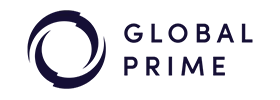The foreign exchange market, commonly referred to as forex, is a global marketplace where individuals, businesses, and institutions trade currencies. One of the key features that attract traders to the forex market is the ability to use leverage, which allows them to control large positions with a relatively small amount of capital. Among the various leverage ratios offered by brokers, 1:300 leverage is a popular choice among traders.

The below list reveals the best Forex brokers offering leverage 1:300:
Top 11 Forex Brokers with 1:300 leverage
-
Fusion Markets
- Australia regulated broker
- MT4, MT5, TradingView, Ctrader
- Leverage up to 500
Trading InstrumentsDeposit Methods- Commodities CFDs
- Crypto CFDs
- Forex CFDs
- Indices CFDs
- Metals CFDs
- Stock CFDs
-
FP Markets
- Australia and CySEC regulated broker
- MT4/MT5, TradingView, Ctrader, Iress
- EUR/USD spread from 0.0 pips
Trading InstrumentsDeposit Methods- Commodities CFDs
- Crypto CFDs
- Energy CFDs
- Forex CFDs
- Indices CFDs
- Metals CFDs
- Stock CFDs
-
ActivTrades
- Winner of 20+ Global Awards
- MT4/MT5, TradingView
- Leverage up to 1:400
Trading InstrumentsDeposit Methods- Bonds CFDs
- Commodities CFDs
- Crypto CFDs
- ETF CFDs
- Forex CFDs
- Indices CFDs
- Share CFDs
-
Global Prime
- Australia regulated broker
- Advanced MT4
- $0 Minimum Account Size
Trading InstrumentsDeposit Methods- Commodities CFDs
- Forex CFDs
- Indices CFDs
- Metals CFDs
-
XM Group
- XM provides great trading experiences using MetaTrader 4 and MetaTrader 5, which are improved by personalized features.
- Zero commission accounts are available
- Top-tier regulation from CySEC, ASIC, FSC, and DFSA oversee XM's operations, assuring transparency and client safety.
Trading InstrumentsDeposit Methods- Bonds CFDs
- Commodities CFDs
- Crypto CFDs
- Energy CFDs
- ETF CFDs
- Forex CFDs
- Forex Options
- Index Options
- Indices CFDs
- Metals CFDs
- Share CFDs
- Stock CFDs
- Stock Options
- US Stock Options
-
FxPro
- NDD broker offering deep liquidity and ultra-fast execution
- Over 99% instant order executions with no requotes
- Supports MT4, MT5, cTrader, and a proprietary platform
Trading InstrumentsDeposit Methods- Commodities CFDs
- Crypto CFDs
- Energy CFDs
- Forex CFDs
- Indices CFDs
- Metals CFDs
- Stock CFDs
-
Pepperstone
- Australia and CySEC regulated broker
- MT4/MT5, TradingView, Ctrader, Iress
- EUR/USD spread from 0.0 pips
Trading InstrumentsDeposit Methods- Commodities CFDs
- Crypto CFDs
- Energy CFDs
- Forex CFDs
- Indices CFDs
- Metals CFDs
- Stock CFDs
-
Axi
- Raw spreads start from 0.0 pips
- Offers order execution faster than standard ECN model
- Axi Select Funded Trader Program offers funding up to $1 million
Trading InstrumentsDeposit Methods- Commodities CFDs
- Crypto CFDs
- Forex CFDs
- Indices CFDs
- Metals CFDs
- Stock CFDs
-
CMC Markets
- Provides a choice of 10,000+ trading instruments
- Supports MT4 and Next Generation (proprietary platform)
- Spreads for EUR/USD from 0.5 pips
Trading InstrumentsDeposit Methods- Commodities CFDs
- Crypto CFDs
- Energy CFDs
- ETF CFDs
- Forex CFDs
- Indices CFDs
- Metals CFDs
- Share CFDs
- Stock CFDs
- US Stock CFDs
-
IC Markets
- Offers 2,200+ tradable markets, including 61 currency pairs
- Leverage of up to 1:1000 in select jurisdictions
- EUR/USD spreads from 0.8 pips for standard accounts
Trading InstrumentsDeposit Methods- Commodities CFDs
- Crypto CFDs
- Energy CFDs
- Forex CFDs
- Indices CFDs
- Metals CFDs
- Stock CFDs
-
eToro
- Popular broker for social trading
- Trading is conducted on innovative in-house platform
- Offers both investing and trading products
Trading InstrumentsDeposit Methods- Commodities CFDs
- Crypto CFDs
- ETF CFDs
- Forex CFDs
- Indices CFDs
- Metals CFDs
- Share CFDs
- Stock CFDs
- US Stock CFDs
Brokers Compared by Spread
FX Brokers Deposit Method Comparison
| Brand | Minimum deposit | |
|---|---|---|
| Fusion Markets | $0 | |
| FP Markets | $50 (AU$100) | |
| ActivTrades | $0 | |
| Global Prime | $0 | |
| XM Group | $5 | |
| FxPro | $100 | |
| Pepperstone | $0 | |
| Axi | $0 | |
| CMC Markets | $0 | |
| IC Markets | $200 | |
| eToro | $50 or $100 based on country ($10 for the UK) |
Forex Brokers by Regulator
| Brand | Maximum leverage | |
|---|---|---|
| Fusion Markets | 1:500 (ASIC | Pro Account), 1:30 (ASIC | Retail Account), 1:500 (VFSC | Retail Account) | |
| FP Markets | 1:500 (CySEC | Pro Account), 1:30 (ASIC | Retail Account), 1:30 (CySEC | Retail Account), 1:500 (FSAS | Retail Account) | |
| ActivTrades | 1:400 (CMVM | Pro Account), 1:30 (CMVM | Retail Account), 1:1000 (FSC), 1:200 (SCB) | |
| Global Prime | 1:500 (ASIC | Pro Account), 1:30 (ASIC | Retail Account), 1:500 (VFSC) | |
| XM Group | 1:30 (CySEC | Retail Account), 1:1000 (IFSC | Retail Account) | |
| FxPro | 1:30 (CySEC | Retail Account), 1:30 (FCA | Retail Account), 1:10000 (SCB | Retail Account) | |
| Pepperstone | 1:500 (CySEC | Pro Account), 1:500 (SCB | Pro Account), 1:30 (ASIC | Retail Account), 1:30 (CySEC | Retail Account), 1:30 (DFSA | Retail Account), 1:30 (FCA | Retail Account), 1:200 (SCB | Retail Account) | |
| Axi | 1:500 (Elite Account), 1:400 (Pro Account), 1:30 (ASIC | Retail Account), 1:30 (CySEC | Retail Account), 1:30 (DFSA | Retail Account), 1:30 (FCA | Retail Account), 1:500 (SVGFSA) | |
| CMC Markets | 1:500 (ASIC | Pro Account), 1:500 (FCA | Pro Account), 1:30 (ASIC | Retail Account), 1:30 (BaFin | Retail Account), 1:30 (FCA | Retail Account), 1:20 (MAS | Retail Account) | |
| IC Markets | 1:500 (CySEC | Pro Account), 1:30 (CySEC | Retail Account), 1:1000 (FSAS | Retail Account) | |
| eToro | 1:400 (CySEC | Pro Account), 1:30 (CySEC | Retail Account), 1:400 (FSAS | Retail Account) |
Forex Brokers Platform Availability
| Brand | FX pairs to trade | |
|---|---|---|
| Fusion Markets | cTrader, MetaTrader 4, MetaTrader 5, TradingView | |
| FP Markets | cTrader, TradingView | |
| ActivTrades | MetaTrader 4, MetaTrader 5, Proprietary Web, TradingView | |
| Global Prime | MetaTrader 4 | |
| XM Group | MetaTrader 4, MetaTrader 4 MultiTerminal, MetaTrader 5, Proprietary Mobile, Proprietary Web | |
| FxPro | cTrader, MetaTrader 4, MetaTrader 5 | |
| Pepperstone | MetaTrader 4, MetaTrader 5, Proprietary Mobile, Proprietary Web | |
| Axi | MetaTrader 4 | |
| CMC Markets | MetaTrader 4 | |
| IC Markets | cTrader, MetaTrader 4, MetaTrader 5 | |
| eToro | Proprietary |
Comprehensive Comparison of Forex Brokers with 1:300 Leverage
This review aims to provide an in-depth analysis of forex brokers that offer 1:300 leverage, including the benefits and drawbacks of using such high leverage, as well as strategies for managing risk. By understanding the concept of leverage, margin, and risk management, traders can make informed decisions and maximize their potential for success in the forex market.
What is Leverage?
Leverage is a fundamental concept in forex trading that allows traders to control large positions with a relatively small amount of capital. It is essentially a loan provided by the broker to the trader, which enables them to trade with more money than they have in their account. Leverage is expressed as a ratio, such as 1:100, 1:200, or 1:300, which means that for every dollar in the trader’s account, they can control $100, $200, or $300 worth of currency, respectively. Leverage can be a powerful tool for traders, as it allows them to potentially earn higher profits with a smaller amount of capital. However, it also increases the risk of significant losses, as the trader is essentially borrowing money from the broker to trade with.
For example, if a trader has $1,000 in their account and uses 1:300 leverage, they can control $300,000 worth of currency. If the trade is successful, the trader can earn a significant profit, but if the trade fails, they can lose a substantial amount of money. It is essential for traders to understand the risks associated with leverage and to use it responsibly.
Types of Leverage Ratios
Forex regulations vary from country to country, and brokers must comply with the regulations of the country in which they operate. As a result, the leverage ratios offered by brokers can differ significantly depending on the country. For example, in the United States, the Commodity Futures Trading Commission (CFTC) limits leverage to 1:50 for major currency pairs and 1:20 for minor currency pairs. In contrast, brokers operating in Europe and Australia are required to further reduce the maximum leverage forex traders can use on major currency pair trades.
Under regulations imposed by the Australian Securities and Investments Commission (ASIC), Financial Conduct Authority (FCA), Cyprus Securities and Exchange Commission (CySEC), as well as many major European regulators, retail forex traders cannot trade forex pairs with leverage higher than 1:30.
Brokers that offer 1:300 leverage are typically registered in countries with more relaxed regulations, offering trading services under licenses from organizations based in Belize, Vanuatu, or the British Virgin Islands. It is also worth mentioning that leverage limits imposed by European and Australian regulators apply only to retail trading, with professional traders having the opportunity to unlock a lot higher leverage when trading forex pairs.
Here are some common leverage ratios offered by Forex brokers licensed in different jurisdictions:
- 1:20 – leverage on minor forex pairs in the United States (CFTC), European Union (ESMA, CySEC), Australia (ASIC), United Kingdom (FCA)
- 1:30 – leverage on major forex pairs in European Union (ESMA, CySEC), Australia (ASIC), United Kingdom (FCA)
- 1:50 – leverage on major currency pairs in United States (CFTC)
- 1:100, 1:200, 1:300 or higher– leverage available on major forex pairs for retail traders in Belize (IFSC regulated), Vanuatu (VFSC regulated), British Virgin Islands (FSC regulated), Seychelles (FSA regulated), Mauritius (FSC regulated); professional traders may also have access to such high ratios
How to Use Leverage When Trading Forex?
Using leverage when trading forex requires a thorough understanding of the risks involved and the use of risk protection tools. One of the most essential risk protection tools is the stop-loss order, which allows traders to limit their potential losses by automatically closing a trade when it reaches a certain price level. Another important tool is the take-profit order, which allows traders to lock in profits by automatically closing a trade when it reaches a certain price level.
It is also essential for traders to understand the concept of margin and how it relates to leverage. Margin is the amount of money required to open and maintain a trade, and it is typically expressed as a percentage of the trade size. For example, if a trader uses 1:300 leverage and the margin requirement is 1%, they will need to have $1,000 in their account to trade $300,000 worth of currency.
To further minimize the risks of trading with leverage, traders can also utilize customer protection tools like negative balance protection and investor compensation schemes. It should be noted that many brokers will limit the availability of such risk-management tools only to retail traders.
What is Margin in Forex Trading?
Margin is a critical concept in forex trading that refers to the amount of money required to open and maintain a trade. We can differentiate three types of margin:
- Initial margin – this is the amount of money required to open a trade, and it is typically expressed as a percentage of the trade size.
- Maintenance margin – this is the amount of money required to maintain a trade, and it is typically lower than the initial margin.
- Variation margin – this is the amount of money required to cover any losses or gains in a trade, and it is typically calculated on a daily basis.
For example, if a trader uses 1:100 leverage and the initial margin requirement is 1%, they will need to have $1,000 in their account to trade with $100,000. Meanwhile, a maintenance margin requirement of 0.5% indicates that the trader will need to have $500 in their account to maintain their trade. If the said trade results in a loss, the trader may be required to deposit additional funds to cover the variation margin.
Traders should carefully review the margin requirements of their broker before trading to ensure that they understand the risks involved. It is also essential for traders to monitor their account balance and margin levels regularly to avoid margin calls.
How to Calculate the Margin?
Calculating the margin requires a thorough understanding of the leverage ratio and the trade size. If you wish to calculate the margin, you can resort to the following formula:
Margin = (Trade Size x Leverage Ratio) x Margin Requirement.
For example, if a trader uses 1:300 leverage and the trade size is $300,000, the margin requirement is 1%, and the margin would be: Margin = ($300,000 x 1/300) x 1% = $1,000.
Traders can also use online margin calculators to calculate the margin required for a trade. These calculators typically require the trader to input the trade size, leverage ratio, and margin requirement, and they provide the margin required to open and maintain the trade.
It is essential for traders to understand how to calculate the margin to avoid margin calls and to manage their risk effectively.
Margin Calls in Forex Trading
A margin call occurs when the trader’s account balance falls below the maintenance margin requirement, and the broker requires the trader to deposit additional funds to cover the margin. Margin calls can be stressful and costly, as the trader may be required to deposit a significant amount of money to cover the margin. In some cases, the broker may close the trade automatically to prevent further losses.
Traders can avoid margin calls by carefully monitoring their account balance and margin levels, and by using risk protection tools such as stop-loss orders and position sizing. It is also essential for traders to understand the margin requirements of their broker and to calculate the margin required for a trade before opening it.
Advantages and Disadvantages of 1:300 Leverage
While many forex brokers consider leverage for a great tool that can be used for a substantial increase of profits, it is also a high-risk tool that can quickly exhaust all of your balance. To help you estimate the value in using 1:300 leverage during your forex trades, we have compared the positive and negative features of trading with such a high leverage ratio.
Advantages of Trading Forex with 1:300 Leverage
- Placing bigger trades with smaller deposits: Trading forex with 1:300 leverage can offer the potential for higher profits with a smaller amount of capital. With 1:300 leverage, traders can control large positions with a relatively small amount of money, which can result in higher profits if the trade is successful.
- Portfolio diversification: Using 1:300 leverage can provide traders with the opportunity to diversify their portfolio, as they can trade multiple currency pairs with a smaller amount of capital. This can help to reduce risk and increase potential returns, as traders can spread their investments across multiple markets.
- Profit from smaller market movements: Since larger leverage ratios allow bigger market exposure, one can quickly gain a decent return even from smalle market fluctuations. With 1:300 leverage, you can profit from smaller price movements, which can be beneficial in range-bound markets.
- Regulatory leverage limits: Unfortunately, due to the high risk related to leverage, many markets across the globe have restricted the leverage ratio available to retail traders, with 1:300 often being available only to professional traders.
Disadvantages of Trading Forex with 1:300 Leverage
Higher risk of significant losses: With 1:300 leverage, even small price movements can result in significant losses, potentially exceeding your initial deposit.Increased margin calls: Higher leverage increases the likelihood of margin calls, which can lead to automatic closure of your positions and significant losses.Over-trading: The potential for higher gains with 1:300 leverage can lead to over-trading, which can result in excessive losses and decreased overall performance.Typically available in less regulated jurisdiction: Leverage of 1:300 is typically offered by brokers who abide by less strict laws and regulations, which often means fewer or no protection tools for traders.
Strategies for Risk Management When Using Leverage
When using leverage in forex trading, it is essential to have a range of risk management strategies in place to minimize exposure to potential losses. One of the most effective strategies is to use stop-loss orders. It can help traders limit losses by automatically closing trades when they reach a certain price level.
Another strategy is to use position sizing, which involves adjusting the size of the trade to manage risk. This can help to reduce the potential for significant losses and increase the potential for profits. Diversification, which involves spreading investments across multiple markets and asset classes, can also reduce risk and increase potential returns, as traders can benefit from the performance of multiple markets.
Furthermore, as brokers allow leverage reduction, traders can lower the leverage ratio to a level that minimizes their exposure to potential losses. This can also decrease the risk of margin calls and increase the potential for profits. Overall, having a range of risk management strategies in place is essential when using leverage in forex trading, as it can help to minimize exposure to potential losses and maximize potential returns.
Conclusion
In conclusion, trading forex with 1:300 leverage can offer several advantages, including the potential for higher profits with a smaller amount of capital. However, it also has several disadvantages, including the potential for significant losses and increased risk of margin calls. To minimize exposure to potential losses and maximize potential returns, traders must have a range of risk management strategies in place, including stop-loss orders, position sizing, diversification, and technical analysis.
Why You Should Trust RationalFX
When it comes to making informed decisions about forex brokers, it's essential to rely on trustworthy sources. RationalFX, a company with over 20 years of experience since its founding in 2005, has established itself as a credible authority in the industry. With an impressive collection of over 2500 reviews on Trustpilot, boasting a score of 4.2, it's clear that Rational FX has built a reputation for providing reliable and unbiased information.
What sets Rational FX apart is its rigorous evaluation process, which considers over 30 different criteria when selecting forex brokers. This comprehensive approach ensures that every aspect of a broker's service is taken in consideration, including regulation, forex spreads, trading platforms, deposit methods, and reputation. With its wealth of experience, transparent review process, and outstanding customer feedback, Rational FX is a trusted source for anyone seeking reliable information on forex brokers. You can reach us via e-mail at feedback@rationalfx.com or contact us through our social media accounts here: Facebook, YouTube, or leave a feedback here.















